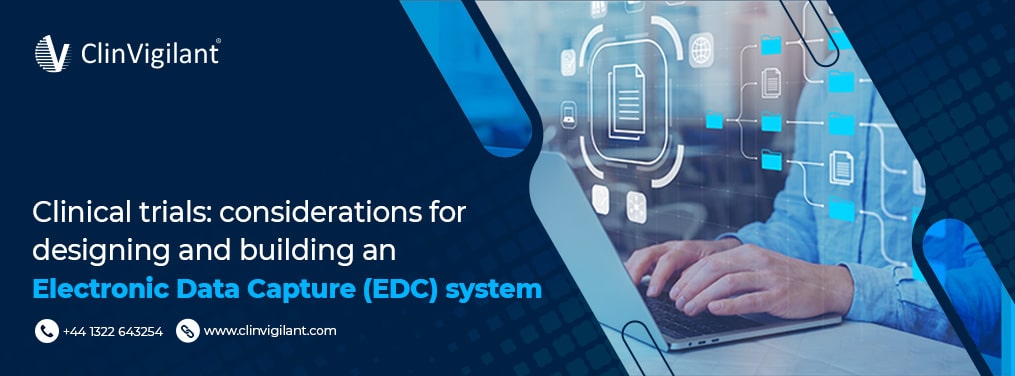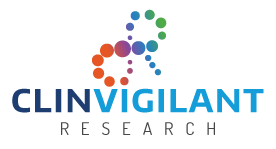
Electronic Data Capture EDC system in clinical trials
An electronic data capture in clinical research (EDC) system is a software platform used to collect clinical trial data electronically instead of using paper. As clinical trials become more complex, with more data to collect and manage, EDC systems have become a necessity. They help streamline and organize the data collection process, ensuring accuracy and efficiency.
eTMF in Clinical Research
An electronic trial master file (eTMF) works hand-in-hand with an EDC system. The eTMF stores all trial documents and essential documents related to the conduct of a clinical trial, providing a central location for everything from protocols and ethics approvals to drug safety reports. Using an eTMF together with an EDC improves oversight and makes processes like auditing and inspection readiness more efficient.
How does EDC work in clinical trials?
EDC in Clinical research systems allow clinical trial data to be entered directly into a secure online database by investigators at study sites. This eliminates the need for paper case report forms. As data is entered, it goes through data validation checks to identify any inconsistencies or errors, improving data quality. The data is then available for review and analysis by sponsors and monitors in real-time via the EDC platform.
The features of electronic data capture in clinical trials
Key features of an EDC system include e-forms for data entry, audit trails to track all changes made, data validation checks, reporting capabilities, workflow automation for processes like query management, role-based access controls and security, and integration abilities with eTMFs, randomization and trial supply management systems, EHRs ,and safety databases.
What is electronic data capture used for?
The EDC software securely collects clinical trial data that would traditionally be transcribed from paper source documents. This includes things like:
- Patient demographics
- Medical/medication history
- Details of study visits and procedures
- Safety event reporting
- Patient-reported outcomes
- Lab results and diagnostics
- Adverse event data
- Protocol deviations
The benefits of electronic data capture (EDC)
Benefits of using EDC in clinical trials include:
- Faster access to clean, consistent data for analysis and reporting
- Elimination of transcription errors that occur with paper forms
- Real-time data queries and prompt issue resolution
- Reduced monitor site visit time as remote data review is enabled
- Workflow efficiencies like central lab integration and automated coding
- Lower data management costs overall
Why use electronic data capture software?
EDC software should be used to collect clinical trial data electronically instead of paper as it offers significant advantages that create higher quality trials. The accurate, streamlined data collection improves patient safety through better AE detection. It also provides faster database lock and study closure. Using EDC also helps make trials more cost-efficient overall.
What is the difference between EDC and eCRF?
While the terms Electronic data capture in clinical trials and eCRF are sometimes used interchangeably, they refer to related but distinct systems. The EDC system is the full software platform that supports and enables electronic data capture. It includes features for data collection, cleaning, review, analysis and reporting. eCRFs refer specifically to the electronic case report forms – the data entry screens used by sites to submit patient data. eCRFs are a key component of an EDC system.
Trends in EDC
Some trends shaping the future of EDC for clinical research include wider adoption of cloud-based EDC systems which offer flexibility, scalability and faster deployment compared to traditional on-premise models. Bring-your-own-device (BYOD) data entry is also growing, allowing site staff to enter data from their personal mobile devices via the EDC’s web interface. Additionally, EDC systems are becoming more intuitive, incorporating AI and machine learning to enhance usability and data standardization. Patient input is also being incorporated into EDC platforms through apps and wearables.
Patient engagement in clinical trials
Patient engagement in clinical trials is becoming a priority. More user-friendly, patient-centric EDCs that directly capture patient reported outcomes and experience data can improve participant retention. Allowing patients to engage via their own devices also boosts convenience. Additionally, portals integrated into EDCs give patients access to their information in real-time during the study. This transparency helps sustain engagement.
Raising Public Awareness of Patient Engagement In Clinical Trials
Raising public awareness about the importance of patient participation in clinical trials can help boost much-needed recruitment numbers to further research. Strategies include:
- Educating the public on clinical trial processes and goals
- Addressing perceptions and dispelling myths about trials
- Communicating the voluntary nature of participation
- Promoting stories of positive trial experiences from other patients
- Increasing trial database visibility to prospective volunteers through listings on public websites
- Engaging patient advocacy groups to spread information on clinical trial opportunities
Sponsors can also raise awareness by incorporating interactive technology like apps into their EDCs that let patients track and share their progress.
Conclusion
When designing and implementing an electronic data capture system, focusing on patient-centered features and intuitive interfaces will lead to more impactful clinical trials. Cloud platforms provide flexibility, while emerging technologies like AI and mobile device integration prepare EDCs to meet evolving demands. With rigorous planning around data flows, user roles, and regulatory guidelines, sponsors can ensure their EDC investment delivers actionable, quality data efficiently through the entire drug development lifecycle.
FAQs
What are some key questions to ask EDC vendors when selecting a system?
Some important questions for potential EDC vendors include: How customizable and configurable are your eCRFs? What data standardization and coding capabilities are supported? What are your platform and data security provisions? What is your experience in regulatory compliance for FDA and EMA trials? Do you offer any patient-facing tools? What type of support and training is included?
How much does implementing EDC software cost?
Costs vary significantly based on the size, scope, complexity of trials. Large, global phase III trials may spend $5-10 million on EDC software licenses, configuration, development, training, and management. Smaller trials can range from $15,000 to $500,000+ in EDC costs. Cloud-based systems help manage costs.
Hope this guide to Electronic data capture system was useful to you guys. For more details contact clinvigilant.

